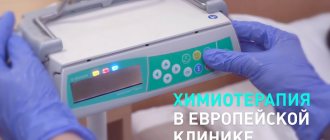pharmachologic effect
The drug is highly active and is a macromolecular complex of the proteolytic enzyme hyaluronidase. When taken, it has the following effects:
- relieves inflammation;
- eliminates swelling;
- promotes activation of humoral immunity;
- antifibrotic.
Longidaza improves tissue nutrition, eliminates adhesions, contractures, accelerates the resorption of bruises and hematomas, and also increases joint mobility.
The drug works best in the initial stages of the disease, preventing its progression and the development of complications.
Longidaza also enhances the effect of local anesthetics, increasing their bioavailability.
The medication is characterized by incredibly low toxicity and the absence of negative effects on the body.
Pharmacodynamics and pharmacokinetics
When the drug is administered by injection, it immediately enters the bloodstream, due to which the maximum concentration of the active substance is achieved in less than half an hour. The bioavailability of Longidase is about 90 percent, and it penetrates into any tissue of the human body. The half-life in this case is one day, and the drug is completely eliminated only after 5 days. It is excreted mainly by the kidneys, partly by the intestines.
When using suppositories, the maximum concentration is achieved only after 60 minutes. This dosage form has 70% bioavailability, and its half-life is extended to 2-3 days.
Indications and contraindications for taking Longidaza
This drug is prescribed not only for the treatment, but also for the prevention of many diseases with connective tissue hyperplasia syndrome. It is used in the following medical fields:
- Gynecology: for inflammatory diseases of the genital organs, as well as for adhesions in the pelvic area.
- Pulmonology: fibrosing and sclerosing diseases of the lungs and respiratory tract, tuberculosis.
- Urology: chronic prostatitis and complicated cystitis.
- Surgery: prevention of adhesions after extensive abdominal surgery.
- Dermatovenereology: scleroderma, rough, keloid, disfiguring scars after various skin pathological processes.
There are also contraindications to the use of Longidase and, despite the low toxicity of the drug, there are quite a few of them:
- Individual intolerance to hyaluronidase.
- Oncological diseases.
- CKD.
- Bleeding and hemorrhage.
- Age under 18 years.
- Infections during the acute period of the disease.
Nosological classification (ICD-10)
- A16.9 Respiratory tuberculosis of unspecified localization without mention of bacteriological or histological confirmation
- J63.4 Siderosis
- J84.1 Other interstitial lung diseases with mention of fibrosis
- J84.8 Other specified interstitial pulmonary diseases
- L94.0 Localized scleroderma [morphea]
- N13.5 Kink and stricture of the ureter without hydronephrosis
- N30.1 Interstitial cystitis (chronic)
- N35 Urethral stricture
- N40 Prostatic hyperplasia
- N41.1 Chronic prostatitis
- N48.8 Other specified diseases of the penis
- N71 Inflammatory diseases of the uterus, except the cervix
- N85.6 Intrauterine synechiae
- N97.1 Female infertility of tubal origin
- N99.1 Postoperative urethral stricture
- N99.4 Postoperative adhesions in the pelvis
- T14.1 Open wound of unspecified body area
- Z100* CLASS XXII Surgical practice
Longidaza: how to take
- Injection form. The course of therapy ranges from 5 to 25 injections, each of which is given once every few days, the frequency depends on the prescription of the treating doctor. When using Longidase for prophylactic purposes, the interval between injections is 2 weeks.
Before administration, the powder is dissolved in 1-2 milliliters of procaine or in saline if the anesthetic is intolerant. The drug is administered slowly and immediately after preparation; it cannot be stored.
- Suppositories. They are administered vaginally before bedtime and in a lying position, rectally only after cleansing the intestines. The course of treatment ranges from 10 to 20 suppositories, depending on the pathology. The interval between administrations is from 48 to 72 hours.
Longidaza (supp.vag/rect. 3000IU No. 10)
A country
Russia
The country of production may vary depending on the batch of goods. Please check with the operator for detailed information when confirming your order.
Active substance
Hyaluronidase + Azoximer bromide Read more on the official website of the drug: Longidaza® - https://www.longidaza.ru/
Compound
Dosage form: vaginal and rectal suppositories Composition per suppository: Active substance: Bovhyaluronidase azoximer (Longidase®) – 3000 IU Excipient: cocoa butter – to obtain a suppository weighing 1.3 g Description: torpedo-shaped suppositories, light yellow in color with a weak specific the smell of cocoa butter, marbling of coloring is allowed. Release form: 5 suppositories in a blister pack made of polyvinyl chloride film. Two blister packs in a cardboard box along with instructions for use.
pharmachologic effect
PHARMACODYNAMICS Longidase® has hyaluronidase (enzymatic) activity of prolonged action, chelating, antioxidant, immunomodulatory and moderately expressed anti-inflammatory properties. Prolongation of the action of the enzyme is achieved by covalent binding of the enzyme to a physiologically active polymer carrier (azoximer). Longidase® exhibits antifibrotic properties, weakens the course of the acute phase of inflammation, regulates (increases or decreases depending on the initial level) the synthesis of inflammatory mediators (interleukin-1 and tumor necrosis factor - alpha), increases the humoral immune response and the body's resistance to infection. Pronounced antifibrotic the properties of Longidase are ensured by the conjugation of hyaluronidase with a carrier, which significantly increases the resistance of the enzyme to denaturing influences and the action of inhibitors: the enzymatic activity of Longidase is maintained when heated to 37 ° C for 20 days, while native hyaluronidase under the same conditions loses its activity within days. The Longidaza® preparation ensures the simultaneous local presence of the enzyme hyaluronidase and a carrier capable of binding enzyme inhibitors and stimulators of collagen synthesis (iron, copper ions, heparin, etc.) released during hydrolysis of matrix components. Thanks to these properties, Longidase® has not only the ability to depolymerize the connective tissue matrix in fibrogranulomatous formations, but also suppress the reverse regulatory reaction aimed at the synthesis of connective tissue components. The specific substrate of testicular hyaluronidase is glycosaminoglycans (hyaluronic acid, chondroitin, chondroitin-4-sulfate , chondroitin-6-sulfate), which form the basis of the connective tissue matrix. As a result of depolymerization (breaking the bond between C1 acetylglucosamine and C4 glucuronic or induronic acids), glycosaminoglycans change their basic properties: viscosity decreases, the ability to bind water and metal ions decreases, the permeability of tissue barriers temporarily increases, fluid movement in the intercellular space is facilitated, and the elasticity of connective tissue increases. , which manifests itself in a decrease in tissue swelling, flattening of scars, an increase in the range of motion of joints, a decrease in contractures and prevention of their formation, and a decrease in adhesions. Biochemical, immunological, histological and electron microscopic studies have proven that Longidaza® does not damage normal connective tissue, but causes destruction of connective tissue that has changed in composition and structure in the area of fibrosis. Longidaza® does not have a mutagenic, embryotoxic, teratogenic or carcinogenic effect. The drug is good tolerated by patients, no local or general allergic reactions were noted. The use of Longidase in therapeutic doses during or after surgical treatment does not cause worsening of the postoperative period or progression of the infectious process; does not slow down bone tissue recovery. PHARMACOKINETICS An experimental study of pharmacokinetics made it possible to establish that when administered rectally, Longidaza® is characterized by a high rate of distribution in the body, is well absorbed into the systemic circulation and reaches a maximum concentration in the blood after 1 hour. The half-life of distribution is about 0.5 hours, the half-life of elimination is from 42 to 84 hours. It is excreted primarily by the kidneys. The drug penetrates all organs and tissues, including passing through the blood-brain and blood-ophthalmic barriers. The absence of tissue cumulation was established. The bioavailability of Longidaza® after rectal administration is high: about 90%.
Indications for use
Adults and adolescents over 12 years of age as monotherapy and as part of complex therapy for diseases accompanied by connective tissue hyperplasia, including against the background of an inflammatory process: - in urology: chronic prostatitis, interstitial cystitis, urethral and ureteral strictures, Peyronie's disease, initial stage benign prostatic hyperplasia, prevention of scar formation and strictures after surgical interventions on the urethra, bladder, ureters; — in gynecology: adhesions (prevention and treatment) in the pelvis in chronic inflammatory diseases of the internal genital organs, after gynecological manipulations, including induced abortions, previous surgical interventions on the pelvic organs; intrauterine synechiae, tubo-peritoneal infertility, chronic endomyometritis; — in dermatovenerology: limited scleroderma, prevention of fibrotic complications of sexually transmitted infections; — in surgery: prevention and treatment of adhesions after surgical interventions on the abdominal organs; long-term non-healing wounds; — in pulmonology and phthisiology: pneumofibrosis, siderosis, tuberculosis (cavernous fibrous, infiltrative, tuberculoma), interstitial pneumonia, fibrosing alveolitis, pleurisy; — to increase the bioavailability of antibacterial therapy in urology, gynecology, dermatovenerology, surgery, pulmonology, etc.
Mode of application
Longidaza® suppositories 3000 IU are recommended for rectal or vaginal use once a day at night for a course of 10 to 20 administrations. For adolescents from 12 to 18 years old, suppositories are administered only rectally. Adults and adolescents over 12 years of age rectally: 1 suppository 1 time per day after cleansing the intestines. Adults vaginally: 1 suppository 1 time per day (at night), the suppository is inserted into the vagina in a lying position. The administration regimen is adjusted depending on the severity, stage and duration of the disease: Longidaza® is prescribed every other day or at intervals of 2-3 days. Recommended regimens and doses: - in urology: 1 suppository every other day for 10 injections, then after 2-3 days 10 injections, a total course of 20 suppositories. — in gynecology: rectally or vaginally, 1 suppository every 2 days, 10 injections, then, if necessary, maintenance therapy is prescribed. — in dermatovenerology: 1 suppository every 1-2 days, 10-15 injections. — in surgery: 1 suppository every 2-3 days, 10 injections. — in pulmonology and phthisiology: 1 suppository every 2-4 days, 10-20 injections. If necessary, a repeat course of Longidaza® is recommended no earlier than three months later or long-term maintenance therapy of 1 suppository once every 5-7 days for 3-4 months.
Interaction
Longidaza® can be combined with antibiotics, antiviral, antifungal drugs, and bronchodilators. When prescribed in combination with other drugs (antibiotics, local anesthetics, diuretics), the possibility of increasing bioavailability and enhancing their action should be taken into account. When used together with large doses of salicylates, cortisone, adrenocorticotropic hormone (ACTH), estrogens or antihistamines, the enzymatic activity of Longidase® may be reduced. Longidaza® should not be used simultaneously with drugs containing furosemide, benzodiazepines, or phenytoin.
Side effect
The frequency of adverse reactions is presented according to the following classification: very common > 10%; frequent > 1% and 0.1% and 0.01% and Contraindications - hypersensitivity to drugs based on hyaluronidase; - pulmonary hemorrhage and hemoptysis; - fresh hemorrhage into the vitreous body; — malignant neoplasms; - acute renal failure; - children under 12 years of age (no clinical trial results); - pregnancy and breastfeeding. WITH CAUTION Use with caution no more than once a week in patients with chronic renal failure or a history of pulmonary hemorrhage. USE DURING PREGNANCY AND BREASTFEEDING Use during pregnancy and breastfeeding is contraindicated (there is no clinical experience of use).
Overdose
Symptoms of overdose may include chills, fever, dizziness, and hypotension. Administration of the drug is stopped and symptomatic therapy is prescribed.
special instructions
When taking the drug, strictly follow the instructions given in the instructions. If you have any questions, ask your doctor or pharmacist for clarification. If an allergic reaction develops, interrupt the use of Longidaza®. When used against the background of exacerbation of foci of infection, to prevent the spread of infection, it is necessary to prescribe under the guise of antimicrobial agents. If adverse reactions occur, as well as if an adverse reaction occurs that is not mentioned in the instructions for medical use, you should contact your doctor. Do not use the drug if there are visual signs of its unsuitability (defective packaging, change in color of the suppository). If you miss the next dose of the drug, continue to use it as usual (do not administer a double dose). If it is necessary to stop taking Longidaza®, discontinuation can be done immediately, without gradually reducing the dose. INFLUENCE ON THE ABILITY TO DRIVE VEHICLES, MECHANISMS The use of the drug Longidaza® does not affect the ability to drive vehicles, maintain machinery and other types of work that require increased concentration and speed of psychomotor reactions. STORAGE CONDITIONS: In a dry place, protected from light, at a temperature of 2 to 15 °C. Keep away from children.


